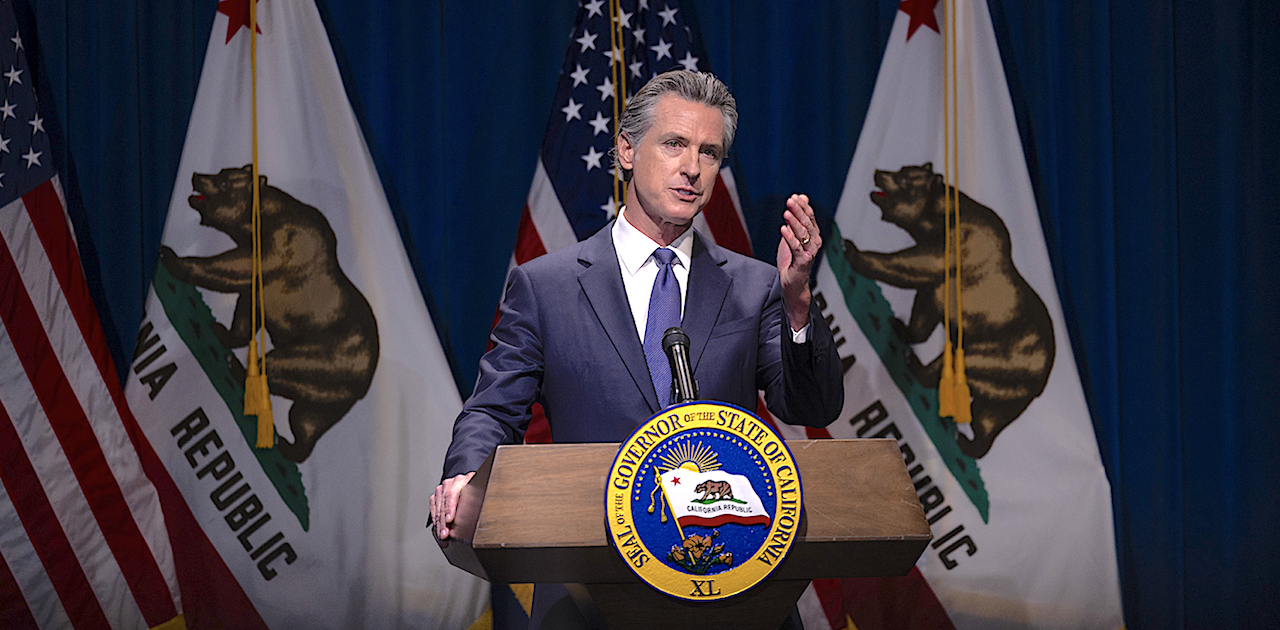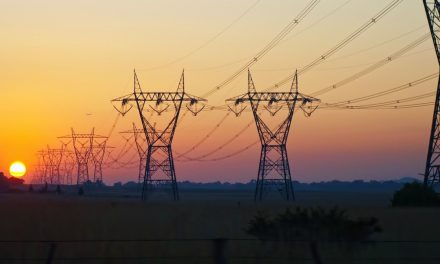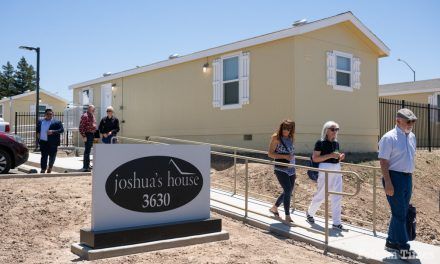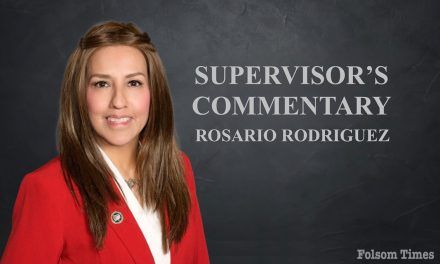California is in a budget hole, its depth measured not in feet, but in dollars. How deep? A projected$38 billion deficit, according to Gov. Gavin Newsom, who said today he will declare a fiscal emergency if necessary and unveiled his initial plan to dig the state out of a fiscal chasm for the second year in a row.
But Newsom painted it as a return to a more normal budget, after recent spikes in revenue. He called it “a story of correction, a story of normalization after a period of tremendous amount of distortion.”
His deficit projection is far less dire than last month’s outlook from the nonpartisan legislative analysts, who projected that the state is eyeing a $68 billion deficit for the 2024-25 fiscal year, which starts July 1.
Crucially, Newsom’s team is assuming $15 billion more in revenues than the legislative analysts, explaining much of the difference in forecasts, based on the resilience of the economy.
“We’re just a little less pessimistic,” said Newsom, who repeatedly criticized the news media’s reporting on the Legislative Analyst’s Office’s figure.
Newsom’s plan to close the deficit includes:
- Withdrawing $13.1 billion from the budget stabilization and safety net reserve accounts;
- Cutting $8.5 billion from existing programs and services, including climate, housing and education;
- Delaying $5.1 billion worth of spending, including on transit;
- And deferring another $2.1 billion to 2025-26, including about $500 million in additional funding for University of California and California State University;
- $5.7 billion in internal borrowing from special funds to support the tax on health care providers.
But he said he wants to protect investments in addressing homelessness, mental health reform, and public safety.
All told, Newsom is proposing a total state budget of $291.5 billion — about $19 billion less than what he and lawmakers approved last June for 2023-24. But January plans are often revised considerably. Last year, Newsom proposed spending $297 billion; the final total in June was upped to $310 billion.
About 70% of California’s total state spending would go toward public schools, colleges and health and social services — a trend that’s held steady since the 1970s, according to a CalMatters review of state budget data.
Unlike the federal government, most state governments, including California, must approve balanced budgets — running a deficit isn’t an option. And California isn’t alone facing a shortfall — about half of Americans live in statesnow grappling with budget gaps, ongoing deficits, or both, according to an analysis by The Pew Charitable Trusts.
But many of the proposals outlined today will undoubtedly change in the months ahead. Following the usual process, lawmakers will hold dozens of hearings to evaluate the governor’s ideas and recommend their own before their June 15 deadline to pass a budget. The Legislative Analyst’s Office will produce independent revenue projections and policy suggestions as more data pours in. The state’s read on the budget starting July 1 will gain greater certainty in May when the governor will release updated revenue projections based on the personal income taxes Californians will have paid by April — and present revised spending proposals.
And while the deficit projected by the governor’s office is about 20% higher thanwhat California faced last year ($32 billion, after two years of record surpluses credited to a healthy stock market and federal funds), experts say we’re not at crisis level just yet: The state is in a better position now to deal with the downturn compared to past deficits during the Great Recession after it put billions in reserves. Even after Newsom’s plan to pull from the state’s reserves, he says the state would have $18.4 billion remaining.
Revenue misfire
In recent years, about 60% of the state’s general fund, the core source of government spending, was paid for by personal income taxes. And the top 1%, whose incomes swing wildly according to the vagaries of the stock market, have historically paid close to half of all income tax revenue for the state.
A main cause of the deficit is a $11.8 billion in revenues compared to what the governor and lawmakers expected when they finalized the current budget last June. The misfire is the result of both state and federal tax collectors giving nearly all Californians more time to file their income taxes due to last winter’s deadly storms.
That decision meant lawmakers and the governor lacked the usual data when they solidified the budget last year. As a result, they committed money they didn’t have to spending programs underway now.
Newsom had already signaled that California’s government needed more belt-tightening: On Dec. 12, his finance department directed state agencies to freeze spending, including new services contracts, IT equipment and vehicles. And last fall, he repeatedly cited the budget crunch in vetoing bills that he said would have added $19 billion in unaccounted costs.
The state budget is actually a multi-year math problem — with very real human consequences — that projects revenues for the year ahead and factors in surpluses or deficits in the current year and year before. One way to find savings is to delay, or outright cut, so-called one-time spending programs. These are typically trial runs of new social programs, construction projects, or experimental programs that last a few years. Last year’s budget projected that the 2024-25 fiscal year would include $12 billion in one-time spending; the Legislative Analyst’s Office said the figure is closer to $9 billion. The analyst’s office said those one-time projects, including $2.2 billion in transportation and $1.8 billion in education, could be on the chopping block.
Building the proposed budget is largely a closed-door exercise until the governor publishes his plan in January. Scott Graves, a budget expert with the California Budget & Policy Center, said that the governor’s office starts developing the January budget around May or June of the previous year.
“So advocates who want to influence what’s going to appear in the governor’s proposed budget will use whatever contacts they have within the administration to make their case for particular expenditures or policy changes that they would like to see included in the governor’s proposal in January,” Graves said in an interview.
That doesn’t mean the governor’s team will listen, but once a budget idea appears in the January draft, it has a strong chance of becoming law six months later when the Legislature and the governor finalize the state’s new spending plan.
If the first six months of the budget process is largely out of public view, the period between now and June is the public’s chance to weigh in,especially as the Legislature begins its numerous budget and subcommittee hearings starting in February.
In anticipation of today’s budget release, some groups started their asks early: The League of California Cities — one of the highest spenders on lobbying the Legislature — asked the governor in a letter last week for a $3 billion funding stream to increase affordable housing and reduce homelessness. For three years in a row, Newsom has granted $1 billion for local homelessness programs.

This coverage was provided by CalMatters Reporters Mikhail Zinshteyn and Sameea Kamal
Mikhail Zinshteyn has been a higher education reporter since 2015. As a freelancer, he contributed to The Atlantic, The Hechinger Report, Inside Higher Ed and The 74. Previously, he was a reporter at EdSource and before that a program manager at the Education Writers Association. Mikhail was born in the Soviet Union and has a master’s degree in comparative politics from the London School of Economics.
Sameea Kamal is a reporter covering the state Capitol and California politics. She joined CalMatters in June 2021 from the Los Angeles Times, where she was a News Desk editor. Sameea was one of three 2020 IRE Journalist of Color fellows, and previously worked for the Center for Public Integrity. She earned her bachelor’s degree from the University of California, Berkeley, and her master’s degree in journalism from Columbia Journalism School. Sameea was born and raised in the San Gabriel Valley in Southern California and is one of the Maynard Institute’s M200 fellows.
Folsom Times is an authorized CalMatters media partner in an effort to keep our local community




